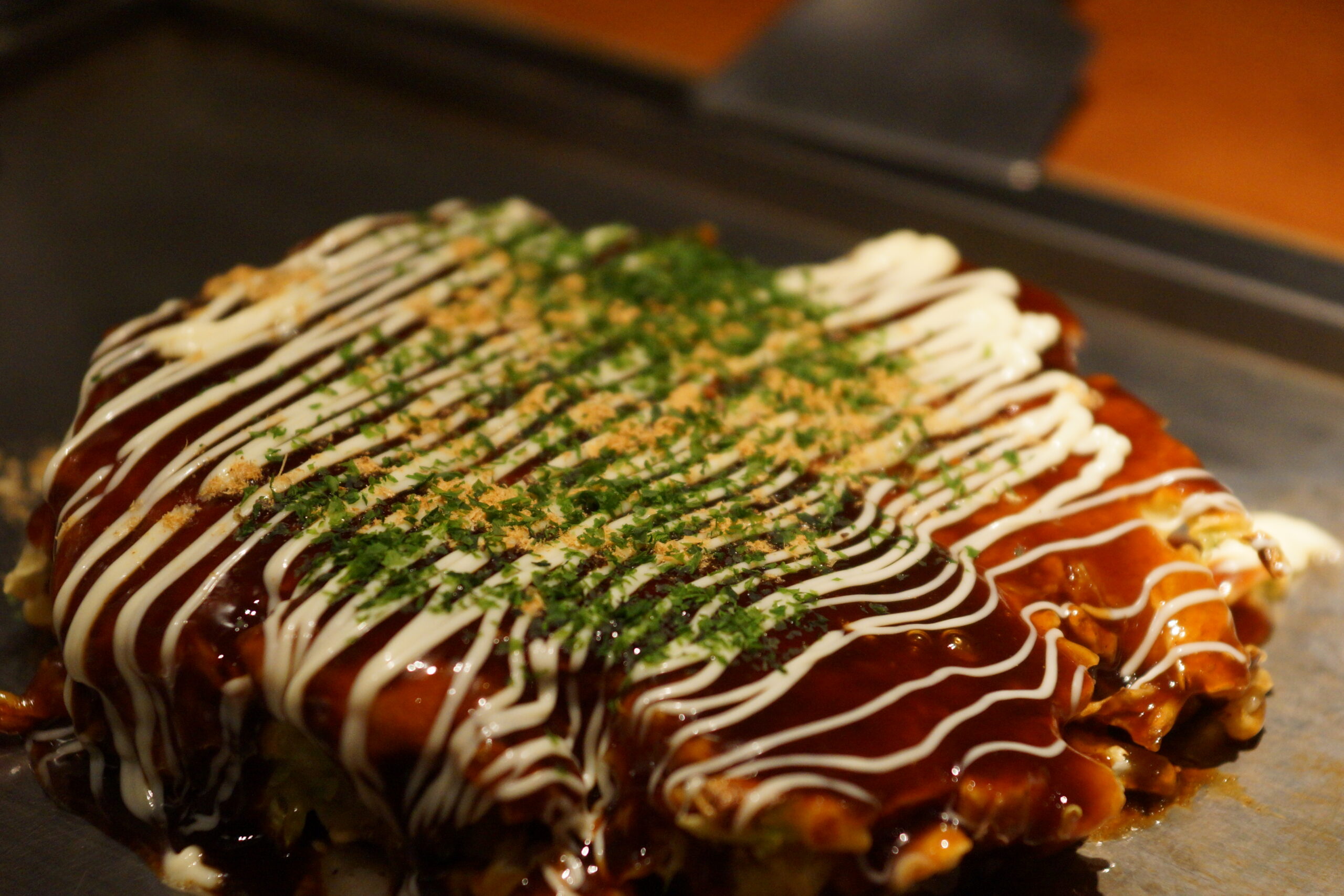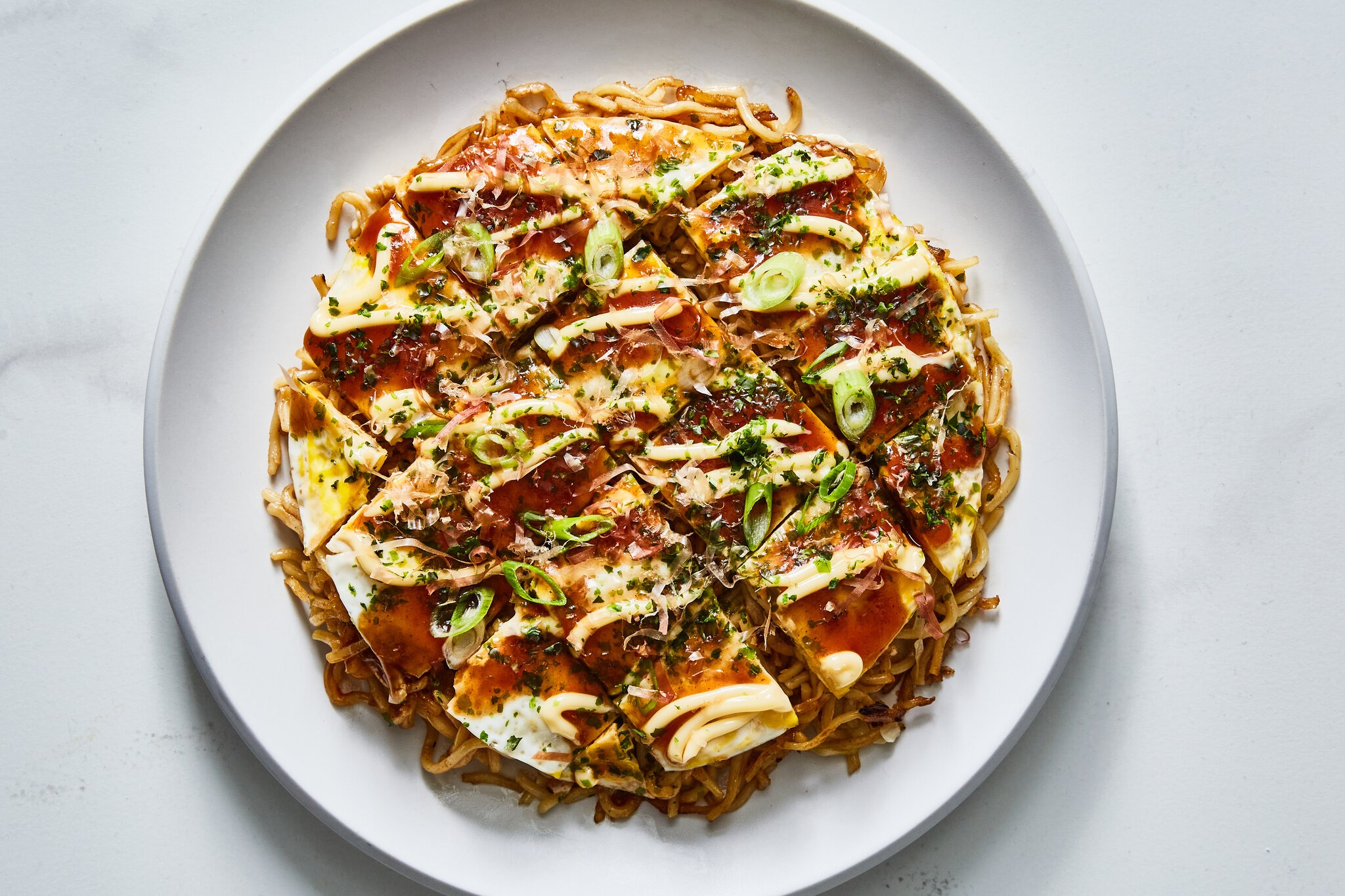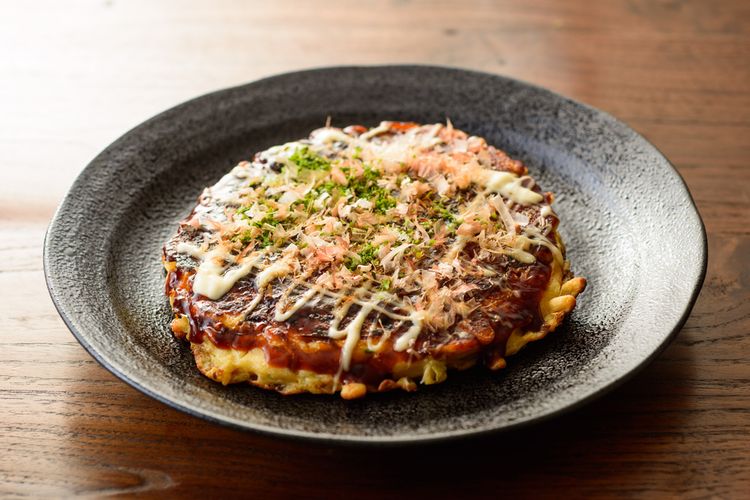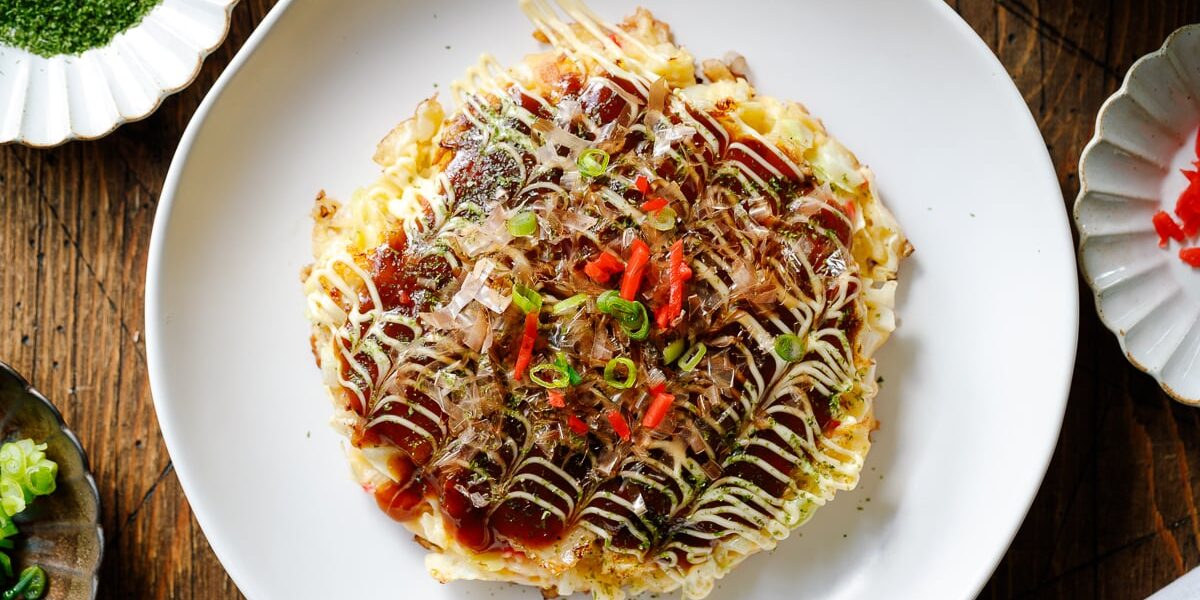Okonomiyaki, often referred to as the “Japanese pancake” or “Japanese pizza,” is a versatile and beloved dish that hails from Japan. Known for its customizable nature and rich flavor, Okonomiyak has become a staple in Japanese cuisine and a favorite among food enthusiasts worldwide. This article explores the history, ingredients, preparation methods, regional variations, and cultural significance of Okonomiyaki, highlighting why this dish holds a special place in the hearts of many.
Okonomiyaki History and Origins
Contents

The origins of Okonomiyaki can be traced back to the Edo period (1603-1868) in Japan, where a dish called “funoyaki” was popular. Funoyaki was a simple flour-based pancake that was often enjoyed with miso paste. Over time, this basic recipe evolved, and by the early 20th century, Okonomiyak as we know it today began to take shape.
The name “Okonomiyaki” is derived from the words “okonomi,” meaning “how you like” or “what you like,” and “yaki,” meaning “grilled” or “cooked.” This reflects the dish’s customizable nature, allowing diners to choose their preferred ingredients and toppings. The dish gained widespread popularity in the Kansai region, particularly in Osaka, and later in Hiroshima, each region developing its own unique style of preparation.
Ingredients
Okonomiyaki is characterized by its diverse range of ingredients, which can be adjusted to suit individual tastes. The core components of Okonomiyak typically include:
- Batter: The base of Okonomiyaki is a batter made from flour, water or dashi (a type of Japanese soup stock), eggs, and shredded cabbage. The batter is mixed until it reaches a thick, pancake-like consistency.
- Fillings: A variety of fillings can be added to the batter, including sliced pork belly, seafood (such as shrimp, squid, and octopus), green onions, tenkasu (tempura bits), and cheese. The choice of fillings is one of the aspects that makes Okonomiyaki so versatile and appealing.
- Toppings: Once cooked, Okonomiyaki is typically topped with a range of flavorful ingredients, including Okonomiyak sauce (a sweet and savory sauce similar to Worcestershire sauce), Japanese mayonnaise, aonori (dried seaweed flakes), katsuobushi (bonito flakes), and pickled ginger. These toppings add depth and complexity to the dish.
Preparation

The preparation of Okonomiyaki involves several key steps:
- Mixing the Batter: The batter ingredients are combined in a bowl and mixed until smooth. Shredded cabbage and any chosen fillings are then folded into the batter.
- Cooking the Okonomiyaki: The batter is poured onto a hot griddle or frying pan, forming a thick, circular pancake. The Okonomiyak is cooked on one side until it is golden brown and crispy, then carefully flipped to cook the other side. This process ensures that the pancake is cooked through and the fillings are heated evenly.
- Adding Toppings: Once both sides are cooked, the Okonomiyaki is transferred to a plate and topped with Okonomiyaki sauce, mayonnaise, aonori, katsuobushi, and pickled ginger. The heat from the pancake causes the katsuobushi to dance, creating a visually appealing presentation.
Regional Variations
Okonomiyaki is enjoyed throughout Japan, with two primary regional styles that stand out: Kansai-style (Osaka) and Hiroshima-style.
Kansai-style (Osaka) Okonomiyaki
Kansai-style Okonomiyaki is the most common and widely recognized version of the dish. In this style, the batter, cabbage, and fillings are mixed together before being cooked linetogel login on the griddle. The pancake is typically thicker and fluffier than its Hiroshima counterpart. This version allows for a wide range of fillings and is often cooked in specialized Okonomiyaki restaurants where diners can watch the chefs at work or even cook their own Okonomiyak at their table.
Hiroshima-style Okonomiyaki

Hiroshima-style Okonomiyaki differs significantly in its preparation method. Instead of mixing the ingredients into the batter, they are layered. First, a thin layer of batter is poured onto the griddle, followed by a generous portion of cabbage. The fillings, such as pork and seafood, are then added on top of the cabbage. Additionally, a layer of yakisoba (fried noodles) is often included in Hiroshima-style Okonomiyak, adding an extra dimension of texture and flavor. The pancake is topped with a final layer of batter and cooked until all the layers are heated through. This version tends to be taller and more substantial due to the layering technique.
Cultural Significance
Okonomiyaki holds a special place in Japanese culture, particularly in the Kansai and Hiroshima regions. It is not just a dish but a communal and social experience. In many Okonomiyak restaurants, diners gather around a large griddle, either watching the chef prepare their meal or cooking it themselves with guidance from the staff. This interactive dining experience fosters a sense of community and enjoyment.
In Hiroshima, Okonomiyak is a symbol of resilience and recovery. After the devastation of World War II, the dish became popular due to its affordability and the availability of its basic ingredients. Today, it is a source of regional pride and a must-try for visitors to the area.
Okonomiyaki is also a popular dish during festivals and special occasions. Street vendors often sell freshly cooked Okonomiyaki at matsuri (festivals), where the delicious aroma wafts through the air, drawing crowds of hungry attendees. The dish’s versatility and crowd-pleasing nature make it a staple at gatherings and celebrations.
Okonomiyaki Beyond Japan
The popularity of Okonomiyaki has transcended Japan’s borders, gaining a following among food enthusiasts worldwide. Japanese restaurants in various countries often feature Okonomiyak on their menus, introducing the dish to new audiences. Additionally, the rise of food blogs, cooking shows, and social media has helped to spread the word about Okonomiyak, with many people trying their hand at making it at home.
For those looking to recreate Okonomiyaki in their own kitchens, the ingredients are increasingly accessible thanks to the availability of Japanese food products in international markets. Many online recipes and tutorials provide step-by-step instructions, making it easier than ever to enjoy this delicious dish no matter where you are.
Conclusion
Okonomiyaki is more than just a savory pancake; it is a culinary embodiment of Japanese culture, creativity, and community spirit. From its humble beginnings to its status as a beloved dish enjoyed by people around the world, Okonomiyak continues to captivate and delight with its rich flavors and endless possibilities for customization. Whether you prefer the fluffy Kansai-style or the layered Hiroshima-style, one thing is certain: Okonomiyak is a dish that brings people together and celebrates the joy of good food.
Read More Article About “UEFA EURO: The Premier European Football Championship“


















